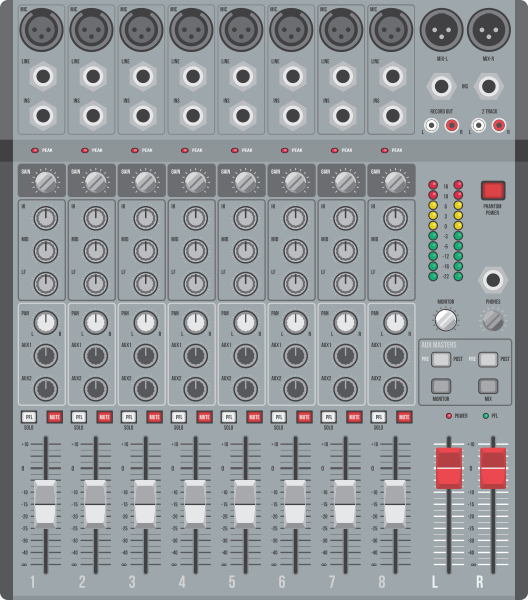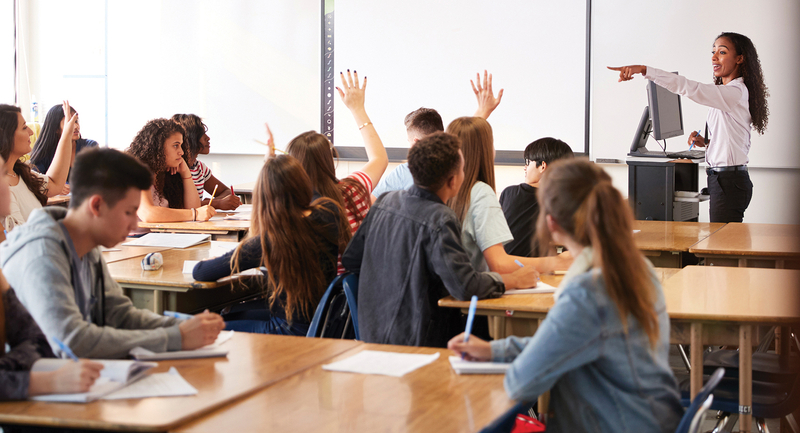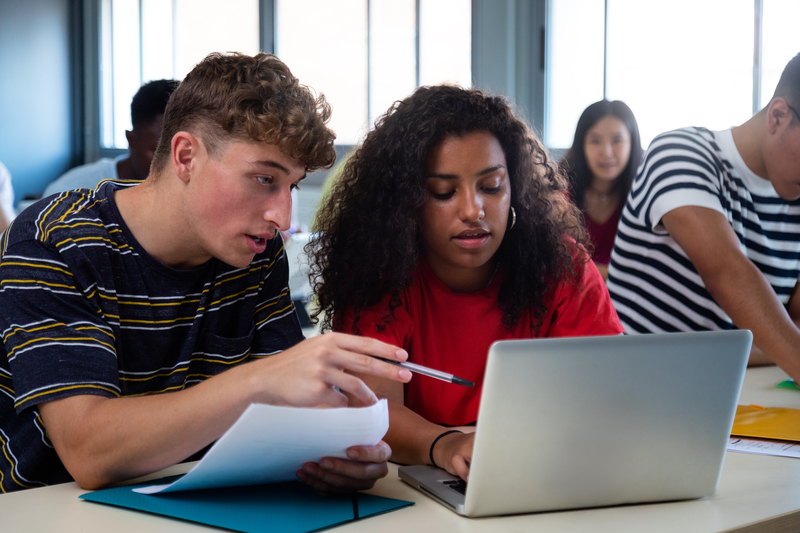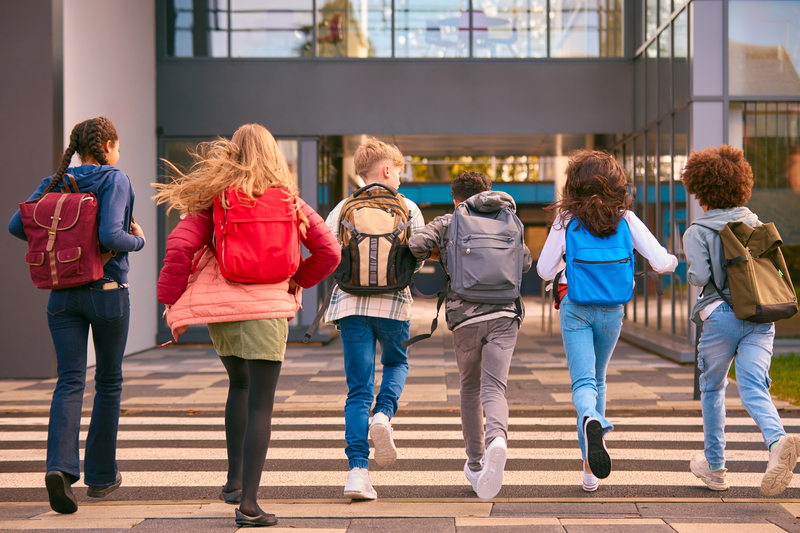- How ready are my students to take control?
- How much can I trust that what's important in the subject matter will be covered if I release some control?
- How will I know whether the students are really learning?
- If I begin to release control, what is my new role with students?
March 1, 2017
•
5 min (est.)•
Vol. 74•
No. 6Orchestrating the Move to Student-Driven Learning
Teachers need to mix the components of personalized learning to achieve the right balance of teacher and student control.

Premium Resource
Credit: Copyright(C)2000-2006 Adobe Systems, Inc. All Rights Reserved.
Educators overwhelmingly agree that the "one size fits all" model of teaching and learning is now behind us. At the same time, though, we face real uncertainty about what's ahead. Personalized learning offers a new direction, but what does this term actually mean? And how should it change the way we work with our students?
Let's start by offering one definition: Personalized learning is a progressively student-driven model in which students deeply engage in meaningful, authentic, and rigorous challenges to demonstrate desired outcomes. The phrase "progressively student-driven" is important because it recognizes that personalizing varies depending on the goals of the lesson and the current needs of the student.
We might view the movement from teacher-directed to student-driven learning as a set of controls, much like the controls on an audio sound board. For each component, the teacher can turn the volume up or down, amplifying or reducing the amount of student agency as the teacher and students begin to feel more comfortable with student self-direction. To orchestrate this process, the teacher reflects on the following questions:
The "Personalizing Sound Board" shows seven key elements of personalized learning that teachers can adjust: Goals; Inquiry and Idea Generation; Task and Audience; Evaluation; Feedback; Instructional Plan; and Cumulative Demonstration of Learning. Here are some thoughts about the way each of these elements can vary as teachers and students co-create instructional designs on a continuum that moves from teacher-generated learning to independent, creative, and student-centered learning.
At the teacher-generated end of the Goals element, the teacher identifies the goals on behalf of the student. For example, in a 4th-grade science unit on extreme weather, the teacher might state that the goal for the unit will be for students to understand the causes of hurricanes and tornadoes in the United States.
As we slide the control into the territory of teacher and student co-creation, the teacher and students identify goals together. For example, after initial research on various kinds of dangerous weather patterns, the teacher and students might work together to identify two locations that interest them and key questions they'd like to explore about the kinds of extreme weather that affect these geographic areas.
As we continue to slide the control toward the student-generated end, each student identifies the goals he or she will work toward during the instruction and verifies them with a teacher or advisor. For example, the goal of the extreme weather unit for each student might be to research a weather pattern and location that especially interests him or her. A student who has family in Haiti may decide to study how recent hurricanes have affected that country.
At the teacher-generated end of the Inquiry and Idea Generation element on the sound board, the teacher frames the inquiry or idea for students, and students work within those confines. For example, in a health unit on the effects of drug abuse, the teacher might assign the class to read an article on the dangers of cigarettes and then ask students to work in small groups to list the five worst effects of cigarette smoking.
As we slide into the co-created area of the sound board, the teacher establishes the parameters of a topic and then gives students opportunities to shape the inquiry on the basis of their own interests and research. For example, the health teacher may frame the inquiry question as, "Should smoking be banned in public places?" and then ask students to research a particular aspect of the question that interests them (for example, the impact of secondhand smoking on passengers in a motor vehicle).
At the student-generated end, students define and articulate the problem, idea, or investigation; the teacher acts as a facilitator and possibly a mentor. For example, given the curriculum topic of how drugs affect health, students might choose which drug to investigate and decide to examine its impact on users, their family and friends, or the community. In the process, they would exercise the learning dispositions of posing questions to gather information and examining a problem through multiple viewpoints.
At the teacher-generated end of the Task and Audience spectrum, the teacher identifies the task (such as creating a podcast, video, or paper) and the target audience. For example, for an 8th grade language arts unit on argumentation, the teacher may assign his students to design a print advertisement to persuade a general audience to purchase tickets to a fund-raising event.
As we move to co-creation, the teacher offers a variety of possible tasks as suggestions to inspire student choice. The audience may be fixed or open, depending on the task. In the case of the unit on argument writing, the teacher may give students the choice of creating a persuasive poster, a podcast, a two-minute speech, or a 30-second video for the fund-raising event.
At the student-generated end, the teacher outlines general task parameters or criteria and students decide on the appropriate form of the task. For example, the 8th grade language arts teacher might ask students to apply what they've learned about argumentation to create a product persuading someone to do something. Students would select what product or action to advocate, the medium they will use, and the target audience, using the learning dispositions of creating, imagining, and innovating; taking responsible risks; and communicating with clarity and precision.
At the teacher-generated end of the Evaluation element, the teacher explains to students how their learning will be measured, describing what high-quality work looks like and how he or she will evaluate students' performance. For example, in a mathematics unit on using data, the teacher might ask students to research purchasing a home in a neighborhood of their choice where home values are changing. The teacher would tell students they'll be evaluated on their ability to build linear models; to perform statistical calculations and form conclusions; and to organize information clearly and accurately. The teacher would score their work products on the basis of the criteria he or she established.
As we slide toward teacher and student co-creation, the teacher's role is to collaboratively develop the performance criteria with students. In the mathematics unit, the teacher might provide students with several exemplars that the class could use to develop criteria for excellence in building linear models, performing calculations and forming conclusions, and presenting data. Students would refer to these criteria as they developed their work products. Students would have opportunities to self-assess on the basis of the criteria they developed, and the teacher would use student input to determine a score.
At the student-generated end of the sound board, the teacher and student collaboratively define criteria for success and establish areas of focus for the data unit on the basis of the student's current skill levels and needs. The student consults with the teacher in scoring the task, considering growth from previous performances.
In teacher-generated Feedback, the teacher provides descriptive, actionable feedback for student revision. For example, the teacher might review the outline of a student's research paper on renewable energy and offer feedback on the quality of the thesis statement, discussing how the student might refine the statement to better focus her ongoing research.
When we shift toward the co-created area, the teacher designs opportunities for the student to network with others to receive feedback on his or her work. For the renewable energy unit, for example, the teacher might assign the student to solicit written feedback on the draft of her research paper from an environmental scientist and from a peer who has studied the same topic. The student would then incorporate the suggestions of these individuals into the final research paper.
At the student-generated end of the sound board, the student independently seeks and uses ongoing feedback, interacting with authentic audiences to create, test, and refine his or her product or performance. The student uses the learning dispositions of listening, thinking flexibly, and persisting to develop and incorporate ideas into further investigation on the topic. In the renewable energy research project, for example, each student might generate questions about his or her research paper and determine whom to seek feedback from, whether to receive the feedback orally or in writing, and how to use the feedback to revise and improve the research paper. One student might ask the language arts teacher to provide feedback on the quality of the written report, a local university professor to comment on the thoroughness of the scientific information, and several peers to suggest additional graphic elements that might make the report more engaging.
In a teacher-generated Instructional Plan, students participate as the teacher directs, and they are expected to move through the material at the same pace. For example, a 10th-grade language arts teacher might design an instructional unit about coming-of-age literary fiction. She would assign the class to read J. D. Salinger's novel The Catcher in the Rye, and would then lead students to explore the novel's themes through whole-class discussions, small-group projects, and a final written paper.
As we slide into co-creation, the teacher and students collaborate to create an instructional plan for learning, considering the sequence, pace, and content on the basis of student needs. In the "coming-of-age" literature unit, students might choose from three novels on this theme and form book groups in which they discussed central questions about the theme of their novel (some generated by the teacher). The groups would facilitate their own discussions and decide how to share their thoughts with the whole class.
In student-generated instructional plans, students work at their own pace. The teacher regularly checks on their progress (for instance, through conferences or diagnostic assessments) to determine how well students' instructional needs are being met. In the coming-of-age literature unit, for example, each student might be allowed to select a text from an extensive list of novels, and then to develop a plan for how he or she wants to read and gain a deeper understanding of the book. Based on experience from established routines in the class, students may choose to create a book study group, Skype with the author, or watch a coming-of-age film to complement the reading.
When students take control of their studies in this way, they often create a written time-management plan that includes their goals, outcomes, how they plan to work, and what their final demonstration of learning will look like. The teacher takes on the role of a coach, making certain that students are learning how to adhere to a plan, how to monitor their understanding of the work, and how to use this opportunity to socially construct meaning about the work.
This final element for personalizing learning focuses on archiving student work to recognize accomplishments and determine next steps. At the teacher-generated end of this element, students follow the teacher's directions and collect pieces of work that document their learning, using criteria prescribed by the teacher.
When we move the controls toward co-creation, students have a larger role in identifying artifacts to demonstrate learning (which could also come from another class or from outside of the school day). The teacher may conference with each student to collaboratively determine the credibility of the evidence, to help the student recognize strengths and weaknesses of the work, and to celebrate his or her achievements.
At the student-generated end, students are the stewards of their collections of work. Each student regularly archives his or her work (for instance, as a portfolio or exhibition), recognizing its strengths and weaknesses and reflecting on whether it aligns with standards and is something he or she can be proud of.
The possibilities of personalizing can be inspiring, exciting, and anxiety-producing for both teachers and students. As teachers transfer greater control of learning to students, they need to intentionally develop in students the "habits of mind" that will enable them to take on this responsibility—dispositions like posing questions to gather information; examining problems through multiple viewpoints; creating, imagining, and innovating; communicating with clarity; thinking flexibly; and persisting through challenges.
The "" illustrates how each element of curriculum design can move from less to more student control. The result is a flexible profile of the amount of personalizing, in which the teacher balances the tone and direction of the classroom according to student development, time, and curriculum requirements. Ultimately, we want to provide as many opportunities for students to drive their own learning as possible. At the same time, we want to be mindful of the need for educators to orchestrate the sound board. In moving toward more student-driven learning, our challenge as educators is to take responsible risks as we reimagine what's possible for our students and ourselves.
End Notes
•1 Zmuda, A., Curtis, G., & Ullman, D. (2015). Learning personalized: The evolution of the contemporary classroom. San Francisco, CA: Jossey-Bass.
•2 Costa, A. L., & Kallick, B. (2009). Learning and leading with habits of mind: 16 essential characteristics for success. Alexandria, VA: ASCD.
•








